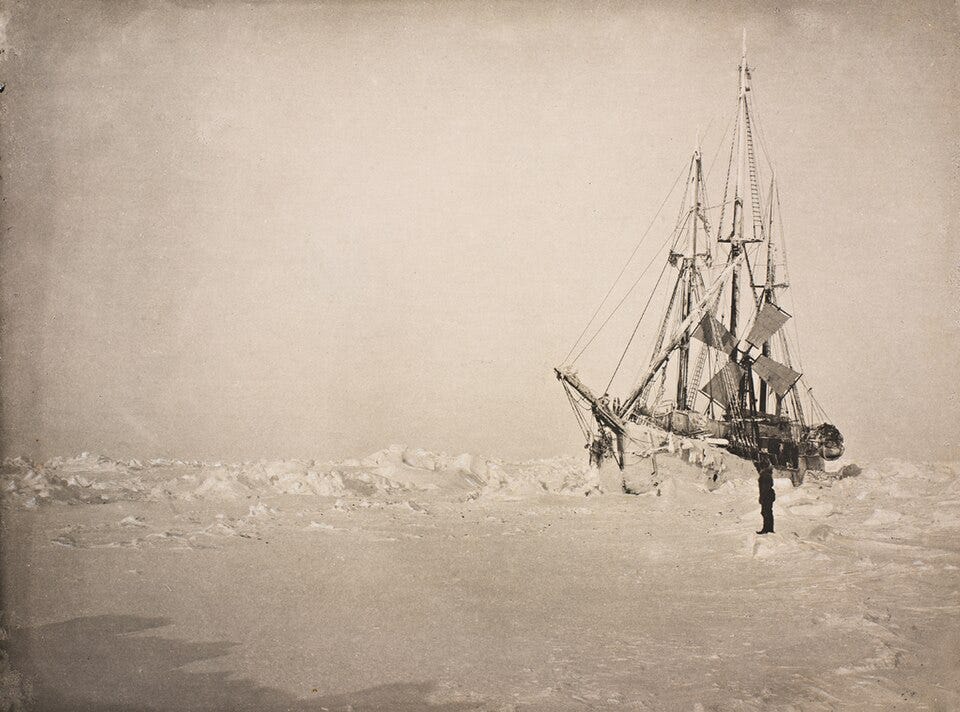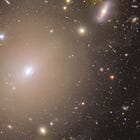The Week in Space and Physics: The Next Big Particle Collider
On Europe's next big particle collider, the demise of antimatter, the first polar astronauts, and an asteroid impact on the Moon

Without a doubt, the Large Hadron Collider is one of the wonders of the modern world. Built underground, with a main ring stretching twenty-seven kilometres long, it is the biggest and most powerful particle collider ever operated. Inside more than a thousand magnets bend and curve beams of subatomic particles, accelerate them to within a fraction of the speed of light, and then collide them at fantastic energies.
All that produces a lot of physics. Its crowning achievement, certainly, was the discovery of the Higgs Boson in 2012, an event that completed the set of fundamental particles predicted by the Standard Model of particle physics. But since then it has operated at even higher energies, and probed the workings of nature in ways possible nowhere else on Earth.
At some point in the next two decades, however, the collider will reach the end of its useful scientific life. Faced with this inevitability, CERN, its European owner, has spent the past few years thinking about what to build in its place. Their preferred option, as an extensive feasibility study outlined last week, is a vast new particle collider.
This new machine would be, the head of CERN declared, “the most extraordinary instrument ever built by humanity”. In size it will dwarf the Large Hadron Collider, and fill a tunnel almost one hundred kilometres in length. Inside it will smash particles together at eight times the energy of the current collider, and so, physicists hope, help unlock a new theory of nature beyond that of the Standard Model.
Yet there is a catch. Perfecting and deploying the technology needed for the project will take time, and that means the new collider will not be completed before the 2040s. Even then, it will take another three decades to reach its full potential, with CERN estimating the final collider will only be up and running towards the end of the century. And all this, of course, will cost a lot of money: sixteen billion euros, CERN thinks, will be needed to complete it.
This machine, if it is built, is thus likely to dominate the direction of particle physics over the twenty-first century. But, some physicists are now asking, is this really the right direction to go in? And will the new collider even offer the returns it is supposed to?
After all, the Large Hadron Collider has not really lived up to its original hype. When it opened physicists were giddy about the prospect of discovering supersymmetry, or of creating strange particles unpredicted by our current theories. But - aside from the Higgs Boson - the collider has so far failed to provide any evidence for new theories of nature.
The prospects for those theories have thus dimmed. And neither is there any guarantee that a more powerful collider will find anything else. Indeed, such a machine may instead end up destroying the tattered reputation of particle physics altogether, and mark it out as a field prone to expensive and unfulfillable promises.
For now CERN seems determined to press ahead with their plans. Yet signs of dissent are emerging – some apparently dubbed the plans for a new collider “pharaonic”. At the very least, Europe's physicists need an open and robust discussion about the path to take. Get it wrong, and they risk wasting a century of work.
How Did Matter Win?
What happened to all the antimatter? In the beginning, according to our best theories of nature, both matter and antimatter were created in exactly equal amounts. Yet today we see very little of it: all the stars and planets in the universe, as far as we can tell, are made out of the same kind of matter as our planet Earth.
This is rather strange. Generally speaking, the laws of physics treat matter and antimatter in exactly the same way, with neither side gaining any advantage over the other. If both were created in equal proportions, in other words, then the two should have exactly annihilated each other, and no stars or planets should have formed at all.
Back in the 1960s, however, physicists found a possible loophole. Some processes in particle physics, they argued, might violate something known as charge conjugation parity symmetry, or CP-symmetry for short. If they did, then over time this violation could tend to favour matter over antimatter.
At first, this idea was entirely theoretical, but it didn’t take long for signs of it to show up in experiments. Until recently, though, CP-violation had only been seen in a class of unstable and short-lived particles known as mesons. In March, however, researchers confirmed that this CP-violation can also happen to baryons – the class of particles that includes protons and neutrons.
The evidence, which is based on experiments run at the Large Hadron Collider, is an important step in solving the puzzle of antimatter. Yet it doesn’t yet provide a complete answer. Though this CP-violation is as predicted by our current Standard Model of particle physics, the effect is too small to explain how matter ended up dominating the cosmos.
It is likely, researchers say, that there is additional process taking place, one that goes beyond our present understanding of physics. Future experiments, including those to be run at the collider in the coming years, might find evidence of that. If they do, it will not just help explain why the stars exist at all, but also help break open a deeper theory of nature.
Polar Astronauts
In 1893 the explorer Fridtjof Nansen set off to reach the North Pole. His idea was unorthodox. Instead of making his way across the polar ice sheets on foot or by sledge, he sailed a ship, the Fram, as far north as he could. When winter set in the Fram was frozen into the ice and then, pushed along by oceanic currents, it gradually drifted towards the pole.
For almost three years the Fram remained entombed in the ice. It never quite reached the pole, and despite a spirited effort to cross the ice sheet with sledges and dogs, neither did Nansen. Yet the Fram did eventually emerge from the ice into the North Atlantic, and Nansen and his crew received a heroes welcome when they arrived back in Norway.
Last week a spacecraft named after that bold expedition, the Fram2, carried a team of astronauts on the first ever crewed flight over the Earth’s poles. Launched by SpaceX, the mission consisted of four privately funded astronauts. All told, they spent less than a hundred hours in space, after which they splashed down off the coast of California.
Though hundreds of people have by now flown in space, none of them had previously flown over the poles. Most crewed missions instead fly at lower latitudes, since these are easier for rockets to reach and tend to experience lower levels of radiation. The four astronauts of Fram2 were thus the first humans to see the poles from low Earth orbit.
An Asteroid Impact... On The Moon?
Back in December, you might remember, astronomers discovered a small asteroid they named 2024 YR4. It soon sparked something of a fuss: the asteroid happens to be following an orbit that will bring it very close to Earth in 2032, and early measurements suggested it might hit our planet towards the end of that year.
Fortunately, follow-up observations have reduced that risk to almost zero. But as astronomers have worked to pin down the asteroid’s movements, another intriguing possibility has emerged. 2024 YR4, NASA now says, has about a four percent chance of smashing into the Moon in December 2032.
If it does, it would not cause much harm. The asteroid is too small to do anything more than leave behind a large crater. But it would still offer astronomers an opportunity to watch a rare asteroid impact, and to study what happens when a new crater forms on the lunar surface.




A lunar impact would be very cool!
It'll be interesting to see the outcome of the FCC debate (if that's how the CERN future collider is still being referred to). And to see whether China's proposed alternative, the CEPC (Circular Electron-Positron Collider) makes it into the Chinese government's 15th 5-Year Plan. Without that, it's probably dead in the water, but if the government do decide to back it, there's a very good chance it could go ahead. CEPC would be similar scale to FCC, and I don't think the high-energy physics community would/could support 2 such machines.